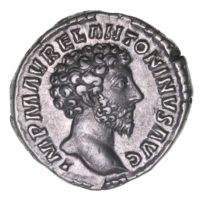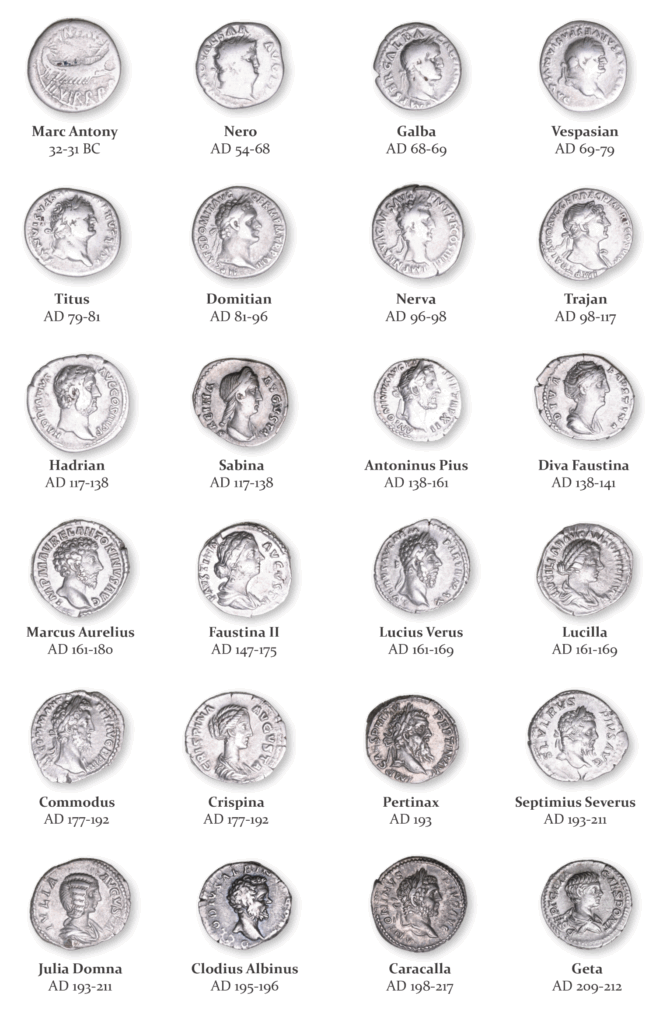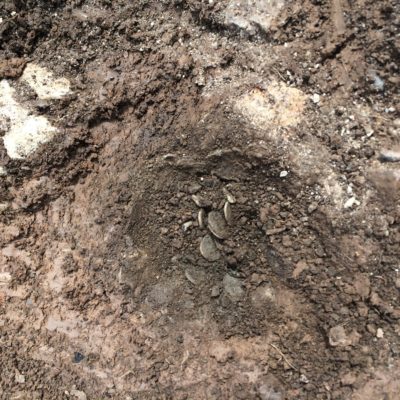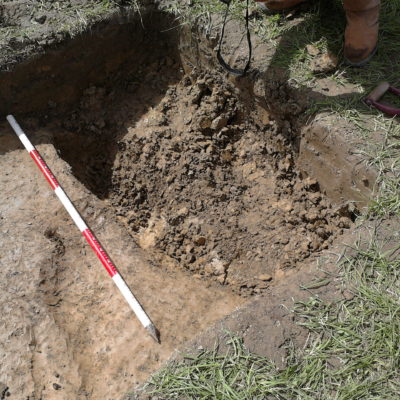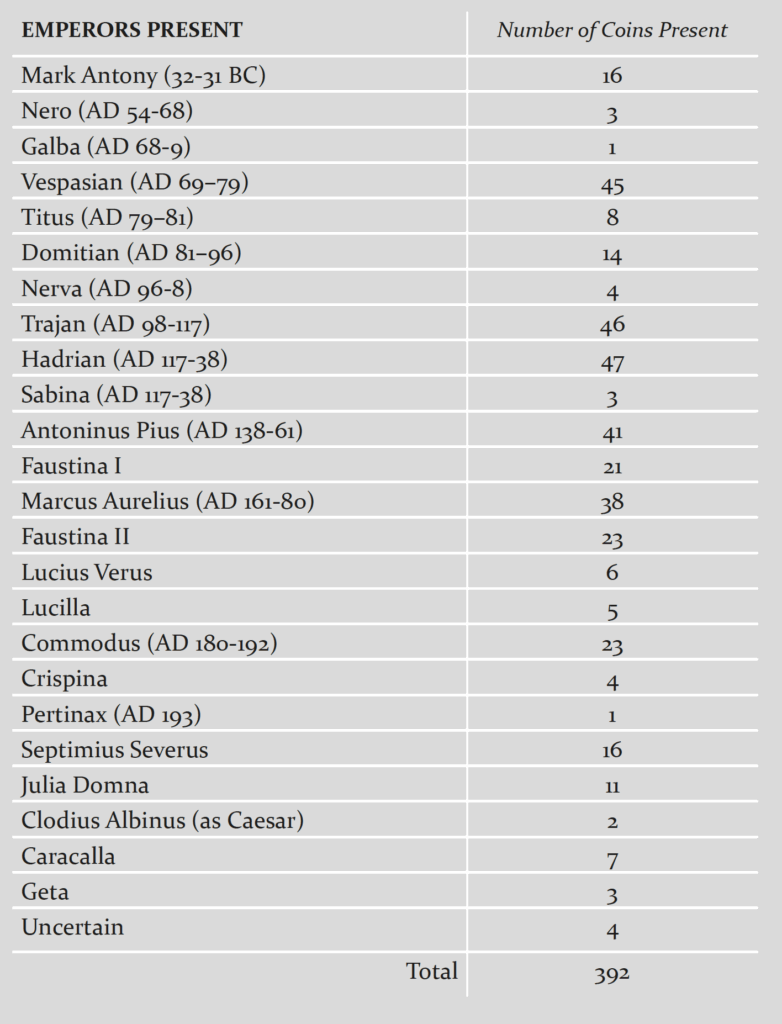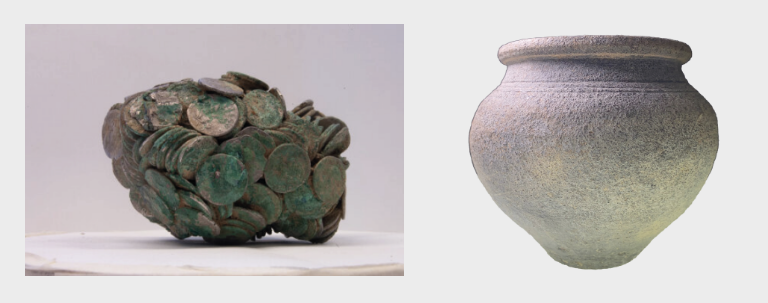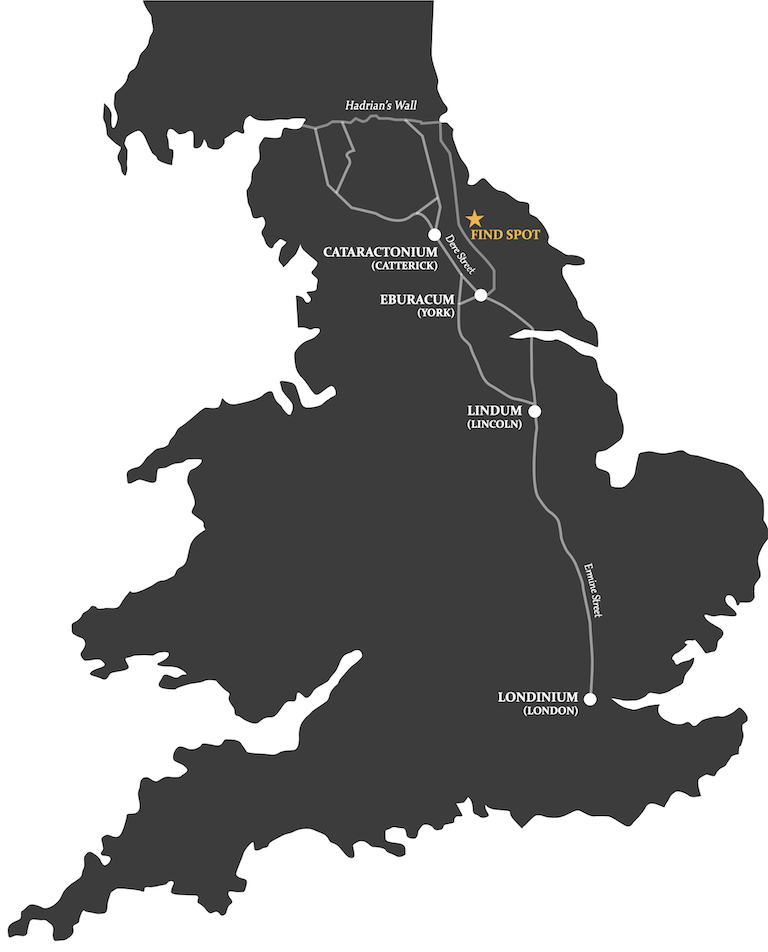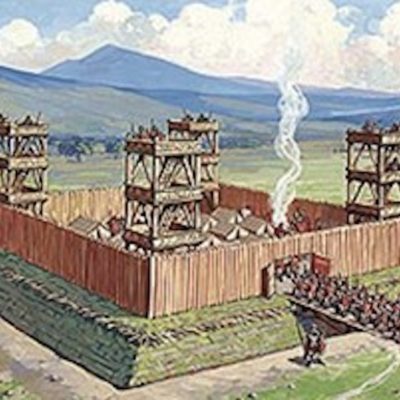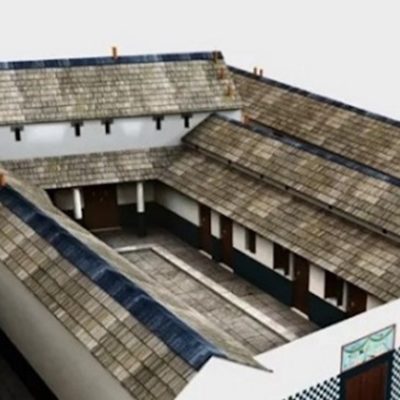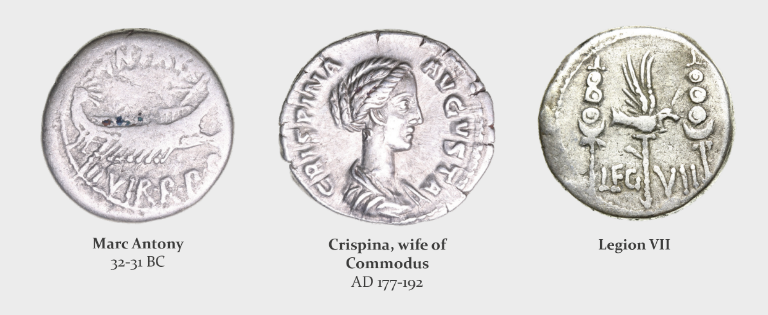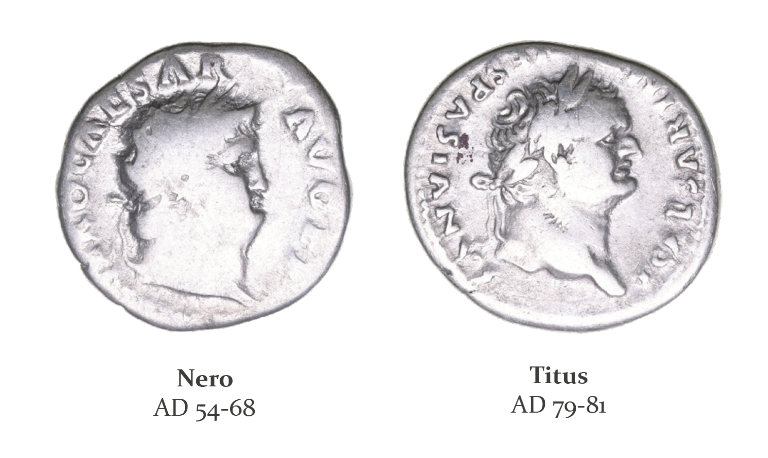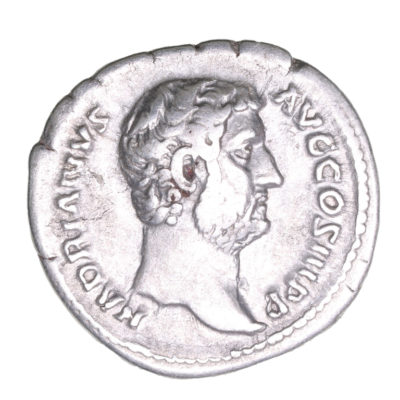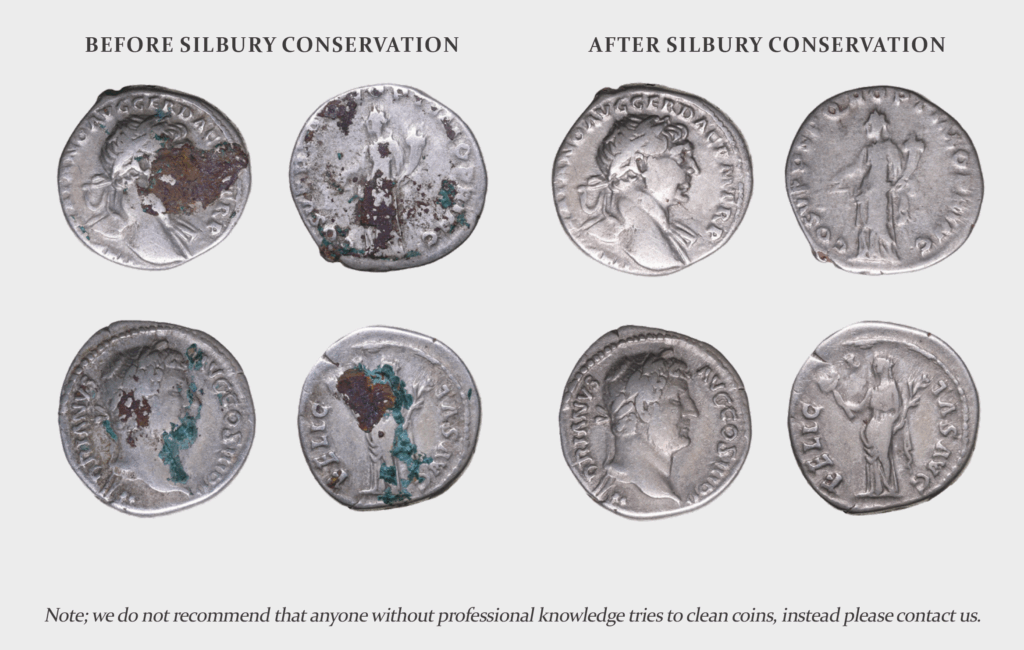The Little Busby Hoard
THE BEGINNING: AD 202-204
Sometime during AD 202-204, in the North Eastern corner of the Roman province of Britannia, a citizen was compelled to bury his hoard of 392 silver denari, equivalent in value to around £9,500 in modern day currency. A substantial amount given that a successful Roman soldier would have been paid around 300 denari per year.
What compelled him to bury the hoard we can only imagine; was it for safe keeping while he headed to a local market, was he a soldier stationed at the nearby garrison town of Catterick (Cataractonium) or had he been asked to head north from York (Eboracum) and help with the trouble caused by the Caledonians near Hadrian’s Wall? What we can say for certain is that these coins were not recovered, at least not in Roman times.

